0 Comments
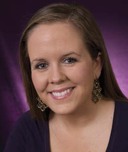 Taylor Bell by Taylor Bell, Guest Blogger The White House is “Pink” this month, but what will they do for Lung Cancer Awareness in November? NOTHING I’M SURE. Do people even know that November is Lung Cancer awareness month? Unfortunately, I doubt it. Sad. Pathetic. Hurtful. Shameful. Stigmatized. Unrecognized. Underfunded. Unimportant to Most. Why? Because everyone thinks that in order to get Lung Cancer you have to smoke, and because you smoke you somehow deserve lung cancer. NO ONE deserves cancer of any kind. Not all smokers get lung cancer and not all lung cancer patients are smokers. Actually 60% of the newly diagnosed are NEVER smokers or former smokers who quit decades ago. ALL cancers deserve the same recognition and awareness that breast cancer gets. We as a society do a disservice to the general public by hyping up breast cancer as much as we do and ignoring all of the other cancers that effect EVERYONE, specifically lung cancer. I’ve said it before but I am going to say it again. Lung Cancer is the NUMBER ONE cancer killer of MEN AND WOMEN in this nation. It kills more people than breast, prostate, colon and pancreatic cancers combined. It is the least funded of all major cancers and the stagnant 15.5% survival rate has remained unchanged for 40 years. 160,000 people will pass away from lung cancer this year alone in the US. For those of you who don’t know, there is one person who is doing everything humanly possible to raise awareness for this disease. Kelcey Harrison is running across the UNITED STATES. Who can say they have done that? I would be surprised if anyone can say they have accomplished that task. 30-40 miles a day for 18 weeks straight….. What more could a person do to bring awareness to this horrible horrible cancer?! There is NOTHING more she could do. She is giving EVERYTHING possible.  ABC News Photo So, why hasn’t the national news media picked up this story? Who knows? Is it because of the stigma? Is it because it’s not the “pretty pink cancer”? Is it because Lung Cancer doesn’t matter to most people? I mean, the girl is RUNNING ACROSS THE UNITED STATES. Why isn’t the TODAY Show, Good Morning America, Ellen, Oprah, Brian Williams, Rock Center begging her to be on their telecast? STIGMA. PERIOD. That’s right folks, we have stigmatized this disease for so long that we have made everyone think that ONLY smokers get lung cancer and that they deserve it and therefore, Lung Cancer isn’t important. Lung Cancer happens to people from all walks of life, Moms, Dads, Grandparents, Aunts, Uncles, Children, Siblings, Sorority Sisters, Division I College Athletes, NEVER SMOKERS, NFL Wives, Famous Singers and Actors, the list goes on. From the great words of Katie Couric “It’s time to put the blame game aside, and figure out what is really going on.” Please join me in trying to bring much needed awareness to Lung Cancer and bringing publicity to the one person who can say they have given everything humanly possible to raise awareness for this dreaded disease. Please follow @greatlungrun on Twitter or visit her website and fundraising page at www.thegreatlungrun.com and www.Crowdrise.com/thegreatlungrun.
10/2/2012 34-Year-Old Mother And Lung Cancer Patient Teams Up With The Bonnie J. Addario Lung Cancer Foundation For Frys.com Golf Tournament (October 8-14, 2012)Read Now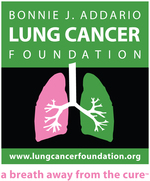 Natalie DiMarco, Daughter of Fry's Electronics CEO John Fry, Rallies Supporters to Raise Monies to Eradicate Lung Cancer SAN FRANCISCO, Oct. 2, 2012 /PRNewswire via COMTEX/ -- Natalie DiMarco is on a mission: to get the attention of First Lady Michelle Obama, Ellen DeGeneres, NBC Today Show's Natalie Morales, Howard Stern and a celebrity roster of high-profile media influencers (and the world) to stand up and pay attention to lung cancer. Almost immediately after being diagnosed with lung cancer, the North Bay, CA mother of two launched her personal campaign to beat the disease, and to tweet to get the attention of media influencers and proactively spread the word. She's also focused on improving all aspects of her life, both physical and emotional. She tweets the media stars with a heart-tugging message that includes a photo of her five and three-and-a-half-year-old daughters, Nicole and Megan: "Here are my two beauties promoting awareness for me, a non-smoker lung cancer survivor at age 34." DiMarco is bringing her team of supporters - Team Natalie, to the "Frys.com Open," Oct. 8-14, 2012 at CordeValle Golf Club, in San Martin, California. Frys.com has been a strong supporter of the Bonnie J. Addario Lung Cancer Foundation (BJALCF), which has been earmarked as the featured charity on Oct. 13th at the tournament. The foundation has been a lifeline to DiMarco and her family since her diagnosis. For DiMarco, a non-smoker, the mission to spread awareness about lung cancer is personal and passionate. In March 2010, on her daughter's first birthday, and after months of numerous doctors misdiagnosing her constant cough and inability to catch her breath, she was dealt a bitter blow: Stage IV lung cancer. "It took me a long, long time and several different doctors and two biopsies before I was diagnosed properly," she said. "My first thought after hearing the news, was what was going to happen to my daughters?" My next thought was: "OK what do we have to do?" Today she is determined to fight the disease and help the 1.6 million people who will be diagnosed worldwide with lung cancer this year. Only 15.5 percent will survive. She is determined to quadruple the survival rate. "We need an army behind us to let the world know what lung cancer patients face and to get the medical community to start aggressively diagnosing and treating this cancer fast," she says. "Lung cancer is an epidemic and I believe we need to rally and do whatever we can to spread the word about how many people this disease is hurting." DiMarco is making an impact. For two years in a row she has brought together Team Natalie at the BJALCF San Francisco 5ks in Golden Gate Park and with about 100 team members each year, she has raised nearly $45,000 so far. "We are thrilled to be the featured charity of the Frys.com Open," said Bonnie J. Addario, founder of BJALCF and 7-year survivor. "Natalie hopes through telling her story that everyone will be encouraged to speak up about lung cancer and not be afraid of the stigma. She gives a powerful voice to all lung cancer patients, especially those diagnosed so young. It shows we are standing up to fight this disease-an epidemic, and together we can bring hope home. You can join Natalie in the fight against lung cancer by participating with us in Fry's.com Open." Currently Natalie is being treated at the Stanford Cancer Clinic and has undergone 39 cycles of chemotherapy - distributed every three weeks. She is also receiving an aggressive Eastern energy-healing regimen at Wu's Healing Center that includes: meditation, organ massage, yoga, herbs, breathing techniques, eating local organic foods and removing the upsetting drama in her life. It has been vital to her progress that she is part of the treatment team with her doctors and they all collaborate with each other. Key to her treatment is the emotional support she and her mother, Teri, have received through the Bonnie J.Addario Lung Cancer Foundation. Determined to accompany and support her daughter on her journey through cancer, Natalie's mom, Teri, is a regular attendee at the foundation's monthly support group - The Lung Cancer Living Room®. The foundation connects patients, physicians, researchers and all involved in lung cancer to work collaboratively and most importantly to share the latest breakthroughs to give patients like DiMarco a voice and access to the best treatments. "The foundation has been a godsend for me and my family," says DiMarco. "I was blessed to go all over the county and learn about cancer. I want others to realize that the foundation is the place to go for lung cancer patients. If I hadn't gone there, I wouldn't have met my doctor and learned about all the tools and techniques I am using. Other patients don't know BJALCF is the place where they can be connected to the best treatment out there." She added: "My focus is that this cancer is a blessing. If I hadn't been diagnosed with cancer, my kids would have never learned about nutrition and how diet and exercise can play a significant role in balancing your body and in making mommy feel better again. My kids will be healthier and stronger because of all of this. " About the Bonnie J. Addario Lung Cancer Foundation BJALCF is one of the largest philanthropies (patient-founded, patient-focused, and patient-driven) devoted exclusively to eradicating Lung Cancer through research, early detection, education, and treatment. The Foundation works with a diverse group of physicians, organizations, industry partners, individuals, survivors, and their families to identify solutions and make timely and meaningful change. BJALCF was established on March 6, 2006 as a 501© (3) non-profit organization. SOURCE Bonnie J. Addario Lung Cancer Foundation Copyright (C) 2012 PR Newswire. All rights reserved The following article was originally published in LSF Magazine: Summer 2012. Copyright 2012 Life Sciences Foundation. In late 2003, Bonnie J. Addario felt a shooting pain across her chest. Her physician suspected herniated disks, but prescribed therapies failed to alleviate her discomfort. Eventually, a CT (computed tomography) scan revealed a suspicious shadow on her left lung. Bonnie was informed by doctors that she had lung cancer, and that the tumor on her aortic arch was inoperable. She was fifty-seven years old. She went home. “I would never have believed it.” Before her diagnosis, Bonnie was an energetic wife, mother, and businessperson. She had never been sick, but she knew about unexpected reversals of fortune. When she tells her life story, she begins by saying: “If someone had told me this would be my path, I would never have believed it. Bonnie graduated from high school in 1965. “College wasn’t an option for me,” she says. “My parents were first-generation immigrants. My brothers were expected to go on. I was supposed to find a man.” Bonnie married and began raising a family. The union produced three children, but ended after twelve years with the family in dire financial straits. The young homemaker lost her house and car in the aftermath, and was forced into a series of menial jobs: “I did temp work for Kelly Girl. At night, I cleaned banks with my kids.” Suddenly, fortune smiled. Bonnie landed a permanent secretarial position at the Olympian Oil Company in South San Francisco. The company provided a range of services to gas and oil producers and marketers. Bonnie worked for the President and Chairman of the Board, performed well, and was rewarded with regular promotions. She displayed a knack for management: “I never went to business school. I figured it out along the way.” In little more than a decade, she became a retail manager, a supply distributor, an oil trader, and, finally, President of the company in 1997. Along the way, she had remarried. Life was good. Bonnie Addario’s success was unlikely, but her determination carried her through. Her untimely cancer diagnosis was a second potentially ruinous disruption in her life, and another test of will. “I sat in my kitchen and tried to relax,” she recalls. “I poured myself a glass of wine and opened the newspaper. My eyes went to a small article about a new cancer care partnership between the University of California, San Francisco [UCSF] and Sequoia Hospital, close to my home in Redwood City.” The partnership was spearheaded by UCSF thoracic surgeon Dr. David Jablons. Bonnie went to see him. He reviewed her case and offered a contrary opinion about surgery to remove the stage IIIB tumor – he believed that potential benefits outweighed the risks. “It will be a challenge,” he said, “but I’m up for it if you are.” Prior to the operation, Addario received radiation treatments five days a week, and chemotherapy every Friday, at Sequoia, in order to shrink the tumor and increase chances of a good outcome. The operation was a success. The surgeon removed the top left lobe of her lung, and part of her esophagus. The tumor was excised, although one of Bonnie’s vocal cords was paralyzed, and two major arteries in her heart were damaged and had to be repaired with grafts. After the surgery, Bonnie developed vascular necrosis, a side effect of steroids prescribed to moderate weight loss. The flow of blood to her bones was impeded. The bones became brittle, and she fractured her femur and hip as a result. She underwent two major surgeries to repair the breaks, and then, a few months later, was treated for a pulmonary embolism. When it was all over, Addario’s prognosis was upgraded. The ordeal left her physically depleted, but mentally charged. “My recovery was long and arduous,” she says. “I had plenty of time to think.” "I knew I had to EDUCATE people - patients, physicians, and the public - about lung cancer." Bonnie’s first instinct after her diagnosis had been to understand her condition and recruit expert medical counsel. Her search for information had been aggravating. Institutional support and education for lung cancer patients was virtually non-existent. The lack moved Addario to contemplate executive action in a new territory: “I knew I had to educate people – patients, physicians, and the public – about lung cancer.” The cancer that the NCI forgot Bonnie embarked on advanced studies in the biology, epidemiology, and politics of lung cancer. In conversation with other patients, she learned that the ‘standard of care’ is late-stage diagnosis, a dearth of treatment options, and poorly-coordinated medical services. She also learned that research on lung cancer is relatively neglected. In 1971, President Richard Nixon declared war on cancer. He signed the National Cancer Act into law, funneled a storm surge of federal dollars toward cancer research, and empowered the National Cancer Institute [NCI] to administer the funds. The legislation became a source of hope for cancer patients and their families, but lung cancer became the disease that NCI forgot. In the United States, lung cancer claims a life every three minutes. It takes twenty people per hour, 450 people per day. The disease kills more people than breast, prostate, colon, liver, skin, and kidney cancer combined, but funding for research on lung cancer lags behind all the rest. A mere 5% of the NCI’s research support budget is allotted to lung cancer projects. In 2001, the NCI’s Lung Cancer Progress Review Group, a panel of thirty expert clinicians, scientists, industry representatives, and patient advocates, reported that funding for studies of lung cancer was “far below the levels that characterize other common malignancies and far out of proportion to its massive public health impact.” The lopsided distribution has not been rectified. A comparison with breast cancer funding is telling. In 2008, lung cancer killed 161,840 Americans. NCI expenditures for lung cancer research amounted to $1,529 per lung cancer death. Breast cancer took 40,480 lives in 2008, but the NCI spent significantly more per breast cancer death: $14,145. Addario’s view of the situation is simple: “Funding should be distributed equitably.” A review of priorities in lung cancer research uncovers further issues. Sixty-two percent of NCI funds are earmarked for studies on prevention, causes, survivorship, and outcomes. Only 38% are dedicated to early detection, diagnosis, and treatment. Addario questions the wisdom of the apportionment. Many lung cancer patients receive stage IV diagnoses: “You have lung cancer. We’ll put you on Carboplatin and Taxol. Your hair will fall out. You’ll get sick and throw up. Then you’ll die.” Seventy-five percent of lung cancer patients die within eight to ten months of diagnosis. "The world still assumes, apparently, that only smokers get lung cancer. THAT IS NOT TRUE." Addario believes that NCI’s emphasis on prevention has to do with the fact that lung cancer is stigmatized as a “smoker’s disease.” Patients diagnosed with lung cancer are regularly asked if they smoked – it’s frequently the first thing they hear when someone learns of their condition. The question is an attempt to make sense of the world, to reduce the complexity of experience and discern order, but it’s simultaneously an attempt to assign blame. If lung cancer is the result of an individual’s decision to smoke, does it deserve as much attention as other common killers – breast cancer, prostate cancer, or colon cancer? Bonnie wants to set the record straight: “The world still assumes, apparently, that only smokers get lung cancer. That’s not true.” Some individuals are genetically predisposed to the disease, and environmental factors – atmospheric pollutants such as radon or the fine particulate matter found in smog, for example – contribute to the formation of lung tumors. Eighty percent of those diagnosed with lung cancer quit smoking decades earlier or never smoked at all. Addario objects to NCI’s funding priorities because studies of causation, prevention, and outcomes will not improve deficiencies in diagnosis and treatment – areas of pressing need that are not similarly deemphasized in, for example, breast cancer research. “The breast cancer movement has done a fabulous job,” Addario says. “The five-year survival rate for breast cancer is now above 90%. We want to achieve the same kind of results for lung cancer.” The five-year survival rate for lung cancer is 15.5%, and the figure hasn’t changed in 40 years. “That’s unacceptable,” Bonnie declares. “It can’t take another 40 years to make a difference. This needs to change!” Institutional impediments When Bonnie recovered her strength, Dr. Jablons asked her to join the UCSF Thoracic Oncology Cabinet, a multi-disciplinary advisory board established to help physicians with challenging or unusual cases, and to spearhead fundraising efforts for university departments involved in oncology research and care. Jablons spied an opportunity to add, in a single stroke, an experienced executive who understood organizational realities, and a cancer survivor who would infuse board deliberations with the patient’s perspective. Bonnie was introduced to Wells Whitney, the board chair. Whitney was also a patient of Jablons. Seven years earlier, he had been diagnosed with stage IV non-small cell lung cancer, and told that he had 10 to 12 months to live. Like Bonnie, his diagnosis spurred him to action. A scientist by training – he has a PhD in materials science from MIT — Whitney walked away from his job as Chief Scientist at Raychem, and immersed himself in scientific and medical literatures on lung cancer. He participated in the design of his own treatment regimen, and, against the odds, reduced the size of his tumor by 50%. The result qualified him to receive an operation usually reserved for early-stage patients. Bonnie recognized that she and Wells had much in common. Jablons’ intuition regarding Addario’s efficacy was soon confirmed. “My first assignment,” she recalls, “involved writing to my friends and asking them for money. I raised $75,000 in two weeks. The UCSF board probably thought, ‘We’ve got a live one here.’” But Bonnie didn’t want her efforts to begin and end with her checkbook. She wanted to do more than maintain the institution. In her view, doctors, scientists, and administrators were too comfortable with the status quo, and disinclined to consider radical reforms to established modes of research and treatment. Addario felt constrained by academia’s bureaucratic inertia. "That's unacceptable. It can't take another 40 years to make a difference. THIS NEEDS TO CHANGE!" “Informed patients live longer” Bonnie was eager to transform the ways in which lung cancer is understood and treated, and skeptical that universities could serve as catalysts of change. She decided to create a separate organization with a threefold mission – to provide patient support and advocacy, to educate and dispel misconceptions about the disease, and to heighten public awareness of the relative neglect of lung cancer research. With assistance from Whitney and Jablons, Bonnie established the Bonnie J. Addario Lung Cancer Foundation (BJALCF) in March of 2006. A few months later, the foundation made a public debut with a fundraising gala for lung cancer research in San Francisco. The evening drew a large crowd and raised an amount that was impressive (although “not nearly enough”). Bonnie was launched on her mission to fix a broken system. She was determined to improve the dismal statistics on lung cancer, one patient at a time. The BJALCF’s initial efforts were directed toward patient education and empowerment. The foundation’s first public awareness campaign urged patients to get CT imaging scans for early detection. The message (“CT Scan – think of it as a mammogram for your lungs”) was emblazoned in glowing pink and green on the sides of buses and highway billboards nationwide. The BJALCF soon refocused, however, and began organizing a diverse resource network through which patients and families could access information, support, and services. “We wanted to help people find their own best care,” Bonnie explains. “We connected them to experts, caregivers, and service providers at multiple sites. We focused on teaching people about what was available.” The goal was to help patients become their own advocates – just as Whitney and Addario had, with positive results. “Information is powerful,” says Bonnie. “Informed patients live longer. They just do.”
“If money were no object…” Patient empowerment was one piece of the puzzle. Addressing inequities in biomedical research was another. Bonnie saw that embedded attitudes and practices in the biomedical establishment needed to be perturbed and recast, and that the BJALCF needed to recruit thought leaders in lung cancer research to the cause. In order to make an impact on the conduct of laboratory and clinical research, the Foundation would need a bigger stage and the firm support of influential experts in science and medicine. Toward these ends, the BJALCF organized a meeting of world leaders in lung cancer research and care. On November 9, 2007 the best and the brightest in cancer research gathered in Genentech Hall on UCSF’s new Mission Bay campus for the first annual BJALCF Lung Cancer Summit. Wells Whitney served as master of ceremonies. Attendees included representatives from the NIH, Genentech, CancerCare, an oncology patient support organization, and Changing Our World, a philanthropy and fundraising consulting group. The keynote speaker for the two-day conference was Michael Milken, financier, philanthropist, cancer survivor, and founder of FasterCures, a self-described ‘action tank’ working to improve biomedical research. The all-star roster of physicians and cancer researchers on hand included Jablons, Dr. Pasi Jänne of the Dana Farber Cancer Institute, Dr. Mark G. Kris of the Memorial Sloan-Kettering Cancer Center, Dr. Fred Marcus of Sequoia Hospital and Dr. Harvey Pass of the NYU School of Medicine. As the researchers rose in succession to talk about their research, Bonnie realized that ingrained conference habits are hard to break. The summit was struggling with a terminal illness of its own: ‘death by powerpoint.’ Addario intervened, drew a curtain on the long string of self-congratulatory progress reports, and refocused the meeting. “We don’t want to know what you’re doing,” she said. “We want to know what you would change.” She challenged the attending scientists, physicians, lung cancer patients and survivors, venture capitalists, pharmaceutical industry executives, and government officials to answer one question: “If money were no object, what would you do to increase lung cancer survival rates?” Bonnie encouraged the group to momentarily forget the obstacles and imagine the possibilities. To be continued... Part II recounts how Bonnie J. Addario, in pursuit of improvements in lung cancer research and care, has pushed patient activism in new directions. She has formulated original ends for the BJALCF and devised innovative strategies for achieving them. Stay tuned. 5/17/2012 Donna Summer: #LungCancer Leading Cause of #Cancer Death @bonniejaddario @joegaeta @teamdraftRead Now By Eryn Brown Orginally publshed by the Los Angeles Times on May 17, 2012, 3:16 p.m. Disco legend Donna Summer, 63, died Wednesday night, reportedly of lung cancer. As of press time, her family hadn’t released details about her illness, so it was unknown what type of lung cancer she had, and how long she may have been ailing. According to the American Cancer Society, lung cancer is the leading cause of cancer death in both women and men, killing more than 150,000 people per year -- more than colon, breast, ovarian and prostate cancers combined. In 2012, the group estimates, there will be about 226,000 new cases of lung cancer in the U.S. Survival rates of people with lung cancer are low. Only about half of people diagnosed with early-stage non-small-cell lung cancer (the more common type) survive five years or more after diagnosis; many lung cancer cases aren't discovered until late in the disease's progression, however, because symptoms often don't arise until the disease is advanced. The risk of developing lung cancer increases with age, but it’s not unheard of for relatively young people to die from the disease. Joe Paterno died of lung cancer at 85; Peter Jennings at 67; Christopher Reeve's widow, Dana, at 44. According to some news reports, Summer hoped to keep her medical condition under wraps. The reasons why are unknown -- but according to Rachel Schwartz, a spokeswoman for the Lung Cancer Foundation of America, it’s not unusual for people with lung cancer to feel ashamed of having the disease, because it is so closely associated with a negative behavior: smoking. "Many famous people who have lung cancer never disclose this fact, which speaks to the huge stigma of this disease," Schwartz wrote in an email. "The stigma of the disease is crushing and any announcement of a lung cancer diagnosis is often accompanied by an assumption that you somehow brought the disease upon yourself." Smoking is the leading risk factor for lung cancer, causing about 90% of the cases, according to the U.S. Centers for Disease Control and Prevention. But about 60% of new lung cancer patients either never smoked or haven’t smoked for many years, Schwartz said. Reeve was a non-smoker; Jennings a 20-year former smoker who admitted to relapses here and there. Second-hand smoke is a known carcinogen. A Web search did not reveal if Summer smoked. News outlets reported Thursday that she believed she developed lung cancer after breathing in dangerous particles in the air in the aftermath of New York's Sept. 11 attacks. Copyright © 2012, Los Angeles Times 4/20/2012 Attention, Washington D.C.: Help Beat Lung Cancer - Jog for Jill on Sunday, April 22nd! #lungcancerRead NowCheck out Jill's Legacy on MSNBC... Visit msnbc.com for breaking news, world news, and news about the economy Register or donate here.
4/5/2012 #LungCancer vanity plate makes swift move through GA General Assembly @bonniejaddario @jackieshope @teamdraftRead Now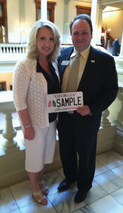 This article was originally published in the Cherokee Ledger-News on 4/3/12. By: Jessica Wagner (PHOTO INSERT: Rep. Sean Jerguson, R-Holly Springs, and former Holly Springs Councilwoman Jacqueline Archer stand with a sample lung cancer awareness vanity plate. The plates should be on the back of vehicles by this summer. Photo special to the Ledger-News) In less than two months, former Holly Springs City Councilwoman Jacqueline Archer has accomplished something that takes many people a year, if not years, to achieve. A bill calling for the production of a lung cancer awareness vanity plate passed both houses March 26 and has made its way to Gov. Nathan Deal’s office; the bill had not been signed by press time. “I am just so excited,” said Archer. “I had no doubt that it was going to go through, but I had no idea that the other license plates, according to Rep. Sean Jerguson, have taken a year or more.” Archer, 47, called the bill a victory for anyone who has been or will be affected by lung cancer in the state. 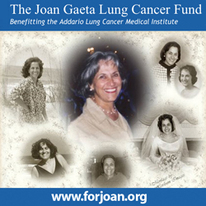 “It all started in Cherokee County because that’s where I am from, but if we could start it here and continue on, then that’s where I would like to go,” she said. “I am thinking big.” Twelve additional states, including California, Illinois, Oklahoma, North Carolina, Florida, New Jersey and Maine, have pledged to follow in Georgia’s footsteps with a vanity plate that will mirror Archer’s mission of spreading lung cancer awareness. “What I am working on right now is an example of what Georgia’s process was for getting the license plate through all of the hoops, understanding that other states may have nuances that are particular to that state,” Archer said. As a stage III never-smoking lung cancer survivor, Archer said spearheading the specialized license plate has been a dream of hers since she overcame her battle with the disease in August of 2005, just 12 weeks after being diagnosed. Her diagnosis came as a surprise six years ago when Archer was involved in a car accident. At the hospital, doctors found an orange-sized mass, which, along with 31 lymph nodes, was successfully removed. Her survival sparked a mission to spread awareness about a disease that she called “underfunded.” The pieces began falling together this past January after Archer teamed up with Jerguson and The Joan Gaeta Lung Cancer Fund to make her vision a reality. The state required 1,000 pre-order commitments prior to legislators casting a vote. While the vanity plates met the requirements set forth by the state, residents interested in donning the lung cancer awareness plate on the back of their vehicles can still place orders at www.lungcancerlicenseplate.org. “We are supplying to the Department of Driver Services everyone who is pre-paying for the license plate, along with the county that the resident lives in and their driver’s license number,” Archer said. By this summer, residents who placed pre-paid orders, as well as first-time payers, can pick up their plates. The money collected from the vanity plate sales are pre-designated for the Addario Lung Cancer Medical Institute (ALCMI) through the listed recipient, The Joan Gaeta Lung Cancer Fund. “Now, we are going to be able to see a financial impact on research and early detection so that we can reach the goal by 2020 of having a survival rate of 50 percent versus the 15 percent that has remained unchanged for the last 40 years,” Archer said. In addition to taking lung cancer awareness vanity plates from coast-to-coast, Archer is traveling to Washington D.C. for a Congressional event April 19. During the event she will speak to legislators about unmasking lung cancer on purpose and not by chance, as was her story. “I am going to testify on behalf of early detection,” she said, adding it is a collaborative event with herself and Dr. Henry Krebs, director of interventional radiology at St. Joseph’s Hospital. “He will be speaking to the medical side of lung cancer; I will be speaking to the lack of early detection screening and my story.” Archer has also reached out to Cherokee County Tax Commissioner Sonya Little to promote the lung cancer awareness vanity plates during National Lung Cancer Awareness Month every November. |
Details
|


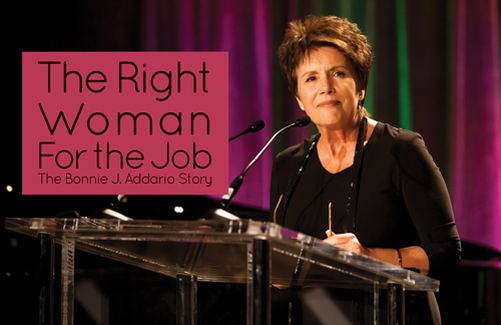
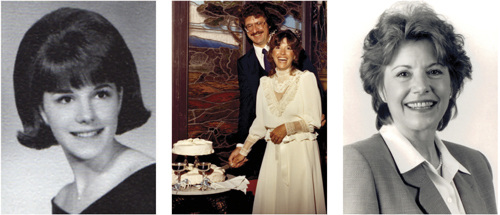


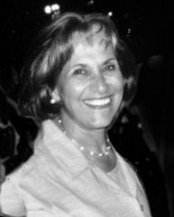
 RSS Feed
RSS Feed
